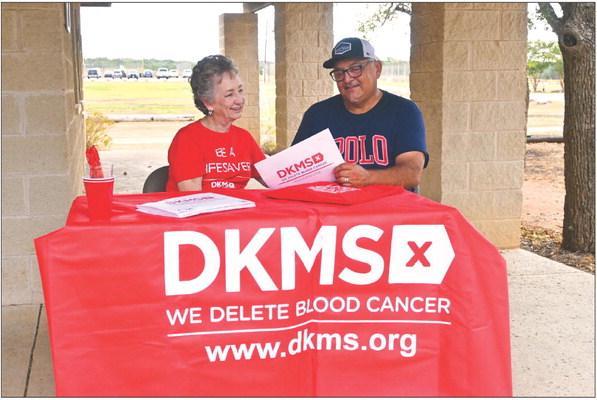Saving lives with the stem cell and bone marrow registry
Every three minutes in the United States, someone is diagnosed with a blood disease like aplastic anemia; immunodeficiencies like Severe Combined Immunodeficiency; and cancers like leukemia, lymphoma and myeloma.
Leukemia, a cancer of the white blood cells, is the most common cancer in children and teens, and most children are diagnosed between the ages of three and five. By the end of 2023, 185,000 people in the U.S. will have been diagnosed with blood cancer alone.
Powerful, lifesaving, treatments for these cancers and disorders are bone marrow and stem cell transplants. These types of transplants are administered after chemotherapy and radiation destroy a patient’s diseased cells and malfunctioning bone marrow so that they can be replaced with healthy, compatible cells. Marrow and stem cell transplants are administered into the bloodstream and do not require surgery.
Donors are matched through registries throughout the world. In the U.S., the stem cell and marrow registry has recorded nine million donors. Today, bone marrow and stem cell transplants bring an 85% survival for patients in the first five years.
When Brenda and Paul Sowada of Dripping Springs learned that their son had leukemia at age five in 1989, he was given only a 66% chance to survive. Fortunately for the Sowadas, their son had the opportunity to grow up and is now a father to three girls.
To help others facing blood diseases, the Sowadas made it their mission
to sign up everyone between the ages of 18 to 55 for the U.S. bone marrow and stem cell registry. They have been at it for 31 years.
“It is so easy to do, and it is free,” said Brenda. “Potential donors swab the inside of their cheeks, and we put the sample into an envelope and send it off for processing. It is painless and takes just a minute.” A quick questionnaire eliminates some, but if someone is a match, the registry picks up all the expenses of donation.
Part of the registration is declaring your ancestry. People who have Korean ancestry, for example, will match patients with Korean ancestry. The big push for companies like DKMS, the Germanbased registry that the Sowadas volunteer for, is to get a wider diversity of registrants so that more people can be saved.
“For most people, the thought of joining a registry is far from their minds,” said Brenda, “but once a disease impacts you or your family, the importance of finding someone who can save us or our child, is enormous. Most donors say they would have done it sooner or they would do it again because of its life saving impact on another human being. It’s a huge thing to know that your healthy blood is now flowing through the body of another person, just like a kidney or any other transplant.” Three more opportunities to join the registry will occur at the Dripping Springs Youth Soccer fields, 370 Sports Park Road, on Sept. 23 from 9 a.m. to noon and later that day at 5:30 p.m. at Arrowhead Ranch, 2303 US Highway 290. Another registration drive will take place on Sept. 30 from 9 a.m. to noon at the youth soccer fields on Sports Park Road.


